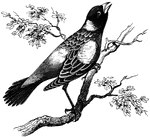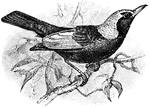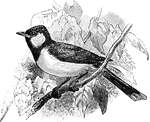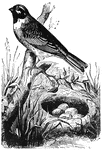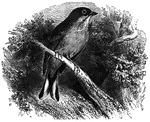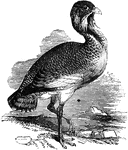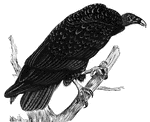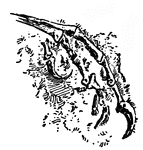179 illustrations of birds including: accentor, adjutant, agami, albatross, alectrurus, anhinga, ani, apterynx, araçarl, auk, avocet, baloeniceps, barbet, batara, bee-eater, bird of paradise, bittern, blackbird, bluebird, boatbill, boblink, bowerbird, bulbul, bunting, bustard, butcher-bird, and buzzard
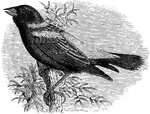
Bobolink
"Dolichonyx oryzivorus. Bobolink. Meadow-wink. Skunk Blackbird (Northern States), Reed-bird (Middle…

Bobolink (Female)
The Bobolink, Dolichonyx oryzivorus, is a small New World blackbird and the only member of genus Dolichonyx.…
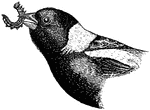
Bobolink (Male)
The Bobolink, Dolichonyx oryzivorus, is a small New World blackbird and the only member of genus Dolichonyx.…
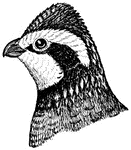
Northern Bobwhite
The Northern Bobwhite, Virginia Quail or (in its home range) Bobwhite Quail (Colinus virginianus) is…
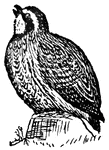
Northern Bobwhite
The Northern Bobwhite, Virginia Quail or (in its home range) Bobwhite Quail (Colinus virginianus) is…
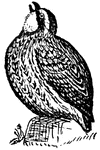
Northern Bobwhite
The Northern Bobwhite, Virginia Quail or (in its home range) Bobwhite Quail (Colinus virginianus) is…
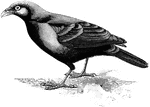
Satin Bower-bird
"Ptilorhynchus violaceus, the Satin Bower-bird, is purplish-black, with much feathered culmen. Female…
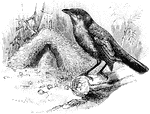
Vogelkop Bowerbird
The Vogelkop Bowerbird (Amblyornis inornata) is a bird in the Ptilonorhynchidae family of bowerbirds…
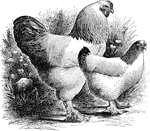
Pair of Light Brahmas
A pair of brahmas, whose base color is white with black hackles edged in white, with a black tail.
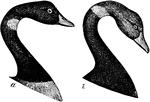
Black Brant Head
"Bernicla nigricans. Black Brant. Bill, feet, and claws black; iris brown. Head and neck all around,…
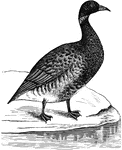
Black Brant
"Bernicla nigricans. Black Brant. Bill, feet, and claws black; iris brown. Head and neck all around,…
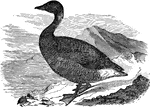
Common Brant
"Bernicla brenta. Brant Goose. Bill, feet, and claws black; iris brown. Head and neck all around, and…

Brazilian Motmot
"The Motmots ... are very wild, and lead an isolated life in the thick forests of South America."
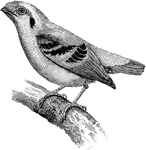
A Broadbill Sitting on a Tree Branch
"The plumage in the Calyptomena viridis of the Indo-Malay countries is bright green, with large black…
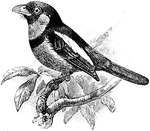
Black-and-Red Broadbill
The black-and-red broadbill (Cymbirhynchus macrorhynchos) is a bird in the Eurylaimidae family also…

Brown Creeper
The Brown Creeper (Certhia americana), also known as the American Tree Creeper, is a small songbird,…
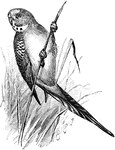
Budgerigar
The Budgerigar (Melopsittacus undulatus), (parakeet, shell parakeet, budgerigah, budgie, or common pet…
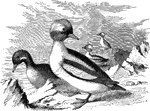
Buffleheads
"Clangula albeola. Buffle-head. Butter-ball. spirit-duck. Dipper. Bill with nostrils rather behind than…
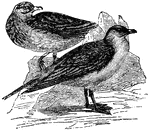
Buffon's Skua
"The Skua, or Dung-bird, is remarkable for its stout bill, which is nearly cylindrical. They fly very…
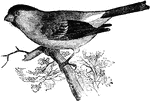
Cassin's Bullfinch
"Pyrrhula cassini. Cassin's Bullfinch. Above, clear ashy-gray; below, cinnamon-gray; rump and under…
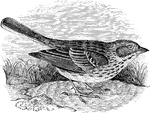
Bay-winged Bunting
"Pooecetes gramineus. Grass Finch. Bay-winged Bunting. Vesper-bird. Above, grayish-brown, closely and…
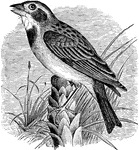
Black-throated Bunting
"Spiza americana. Black Throated Bunting. Above, grayish-brown, the middle of the back streaked with…

Cirl Bunting
Buntings build their nests on the ground, or on low bushes, and in this deposit four or five eggs, (Figuier,…
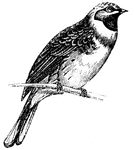
Cirl Bunting
Buntings build their nests on the ground, or on low bushes, and in this deposit four or five eggs, (Figuier,…

Lark Bunting
"Calamospiza bicolor. Lark Bunting. White-winged Blackbird. Black, with A large white patch on the wings;…

Ortolan Bunting
The Orlotan buntings are very shy; still great numbers are captured in nets, when they are kept in confinement,…

Reed Bunting
Buntings build their nests on the ground, or on low bushes, and in this deposit four or five eggs, (Figuier,…

Snow Bunting
A bird of the bunting family, widely distributed in America and Eurasia. It differs from the true buntings…
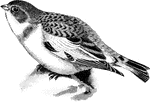
Snow Bunting
" The Snow Bunting (Plectrophenax nivalis), with its black, chestnut, and white plumage, that becomes…
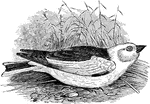
Snow Bunting
"Plectrophanes nivalis. Snow Bunting. Snowflake. Pure white; the bill, feet, middle of back, scapulars,…
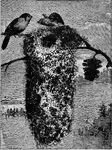
Two Least Bush-Tit Sitting on their Nest
"Dull lead-color, frequently with a brownish or olivaceous shade, the top of the head abruptly darker…
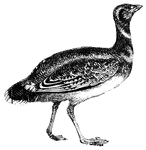
Bustard
Bustards are stocky birds with strong legs. They fly with difficulty, and do not fly unless necessary.
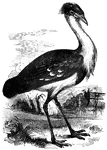
Black-Billed Bustard
Found in India, the black-billed bustard can measure up to four and a half feet in length.
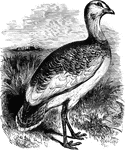
Great Bustard
Forty-five inches in length, the great bustard feeds on green wheat, grapes, trefoil, and other vegetable…
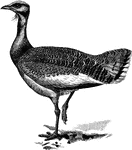
Great Bustard
"The Otis Tarda, the Great Bustard, which, as a native only became extinct in Norfolk about 1838, used…
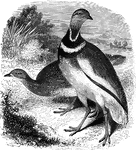
Little European Bustard
The little European bustard measures about seventeen inches in length, and is found predominently in…
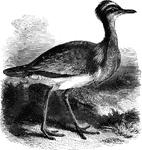
Macqueen's Bustard
Feeding mostly on insects, Macqueen's bustard makes its home in the dry sandy plains of Afganistan.

Butcher-bird
"Lanius borealis. Great Northern Shrike. Butcher-bird. Great Grey Shrike. Above, clear bluish-ash, blanching…

Butcher-bird Head
"Lanius borealis. Great Northern Shrike. Butcher-bird. Great Grey Shrike. Above, clear bluish-ash, blanching…
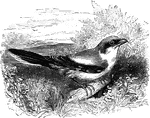
Great Butcher-Bird
Also known as the gray shrike, the great butcher-bird is known for securing its prey to thorns so that…
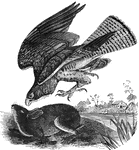
Common Buzzard of Europe
"B. vulgaris is twenty-two inches long, the head is large and the body heavy. Above, the color…
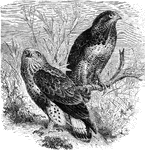
American Rough-legged Buzzard
"Archibuteo lagopus sancti-johannis. American Rough-legged Buzzard. "Black Hawk" Adult: Too variable…

Red-tailed Buzzard
"Buteo borealis. Red-tailed Buzzard. "Hen Hawk". Upper surface of tail rich chestnut, with white tip…
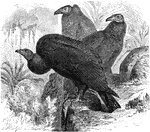
Turkey Buzzard
"Cathartes aura. Turkey Buzzard. Blackih-brown, grayer on the wing-coverts; quills black, ashy-gray…
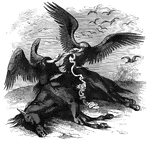
Turkey Buzzards
Genus Cathartes, found in the Americas, sometimes as far north as New England. These buzzards…
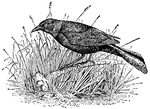
Crow Blackbird
The crow blackbird, or purple grackle, eats a variety of foods. About 48% of their diet contains animal…
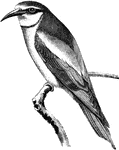
Bee Eater
"Merops Apiaster, the Bee-eater, has ruddy-brown head, neck, upper back, and broad alar bar, buff lower…
